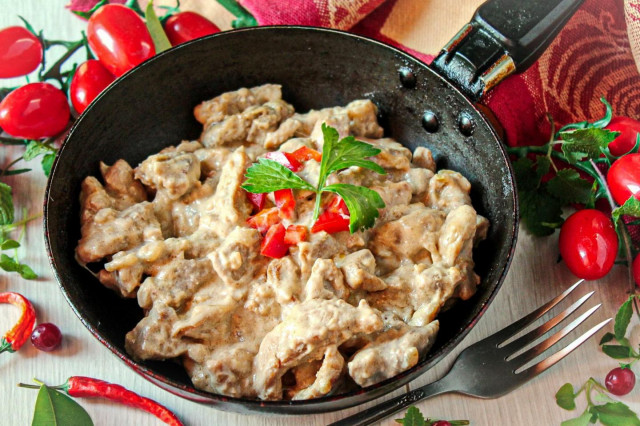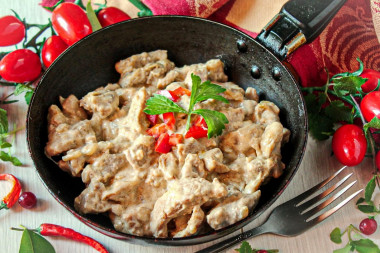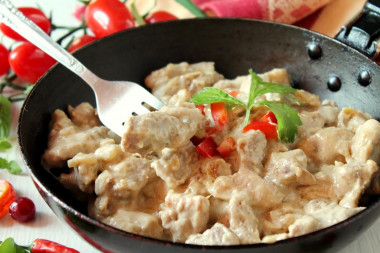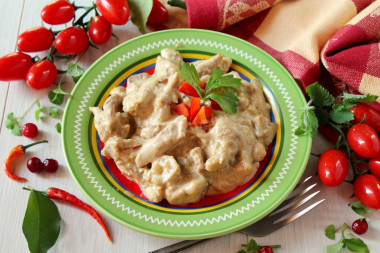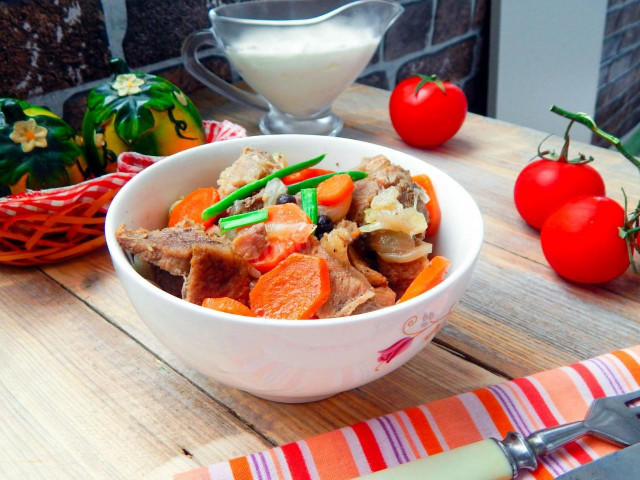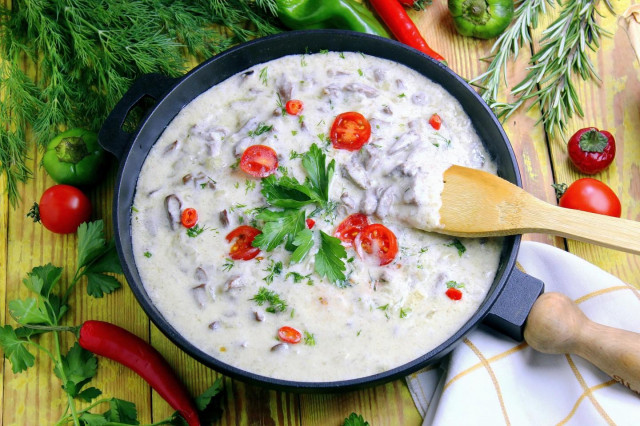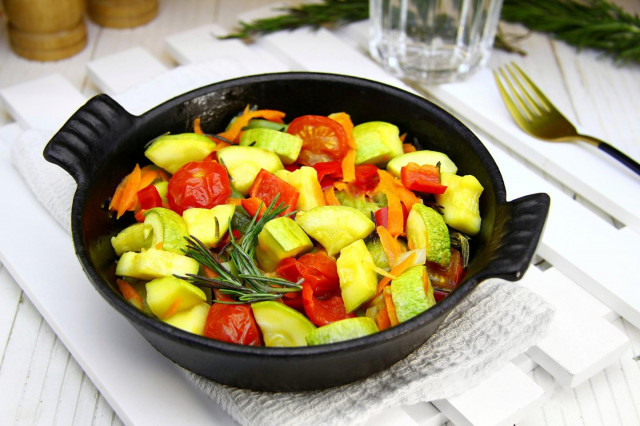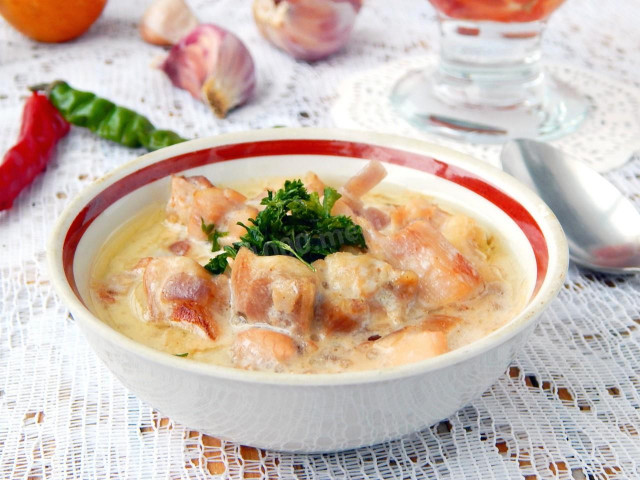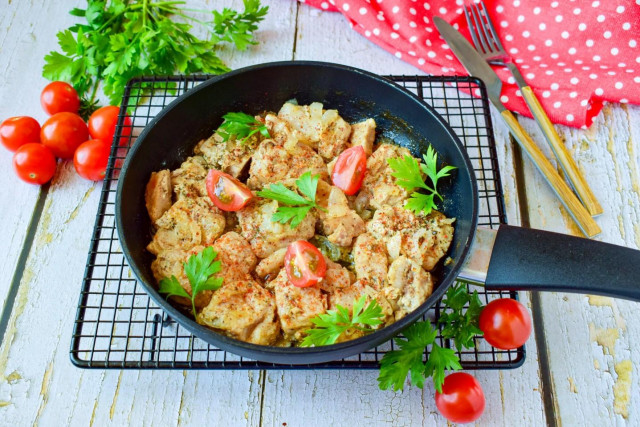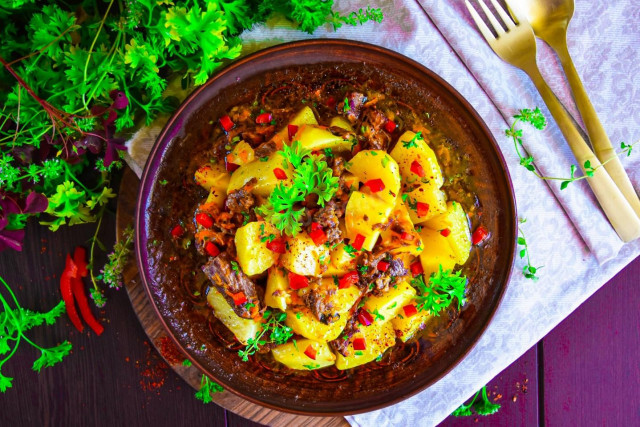Composition / ingredients
Step-by-step cooking
Step 1:
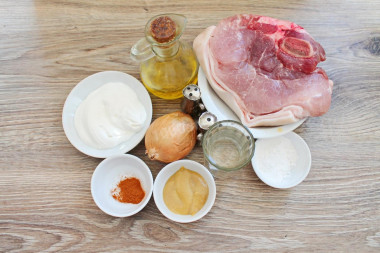
How to put out meat in sour cream? First, prepare all the necessary ingredients. Pork is best to take fillets, but if there is none, then remove all bones and skin from the meat. Take sour cream necessarily thick, fresh and of the highest fat content.
Step 2:
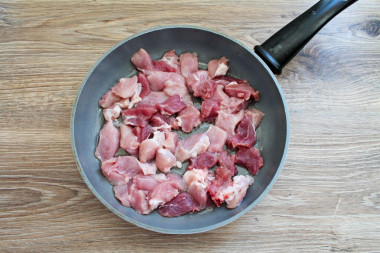
Rinse the meat and be sure to dry it, otherwise in the future the meat will not fry, but will cook in liquid. Cut the pork into strips and put it in a preheated frying pan with oil. Be sure to cut the meat across the fibers, then the meat will be soft and easily sorted into fibers.
Step 3:
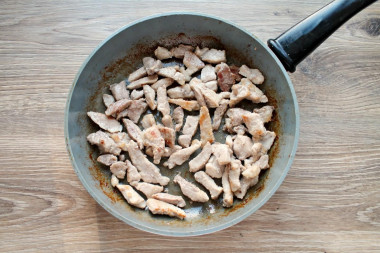
Fry the meat in a frying pan over high heat for 5-7 minutes until golden brown, stirring.
Step 4:
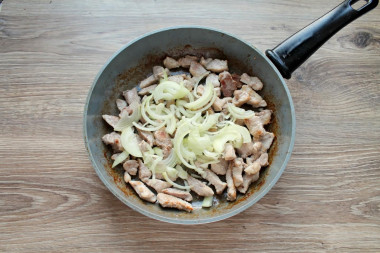
Peel the onion and cut it into half rings. Add the onion to the pan.
Step 5:
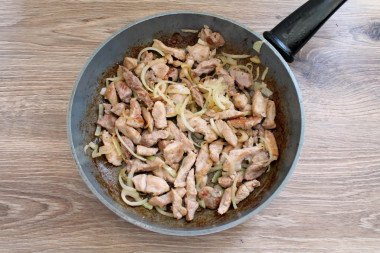
Fry everything for 3-5 minutes over medium heat, stirring to avoid burning. Focus on your stove.
Step 6:
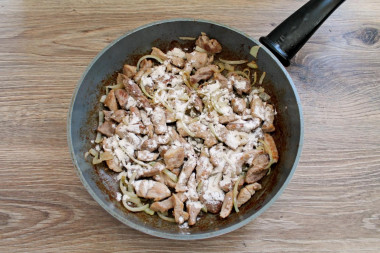
Pour the flour into the pan and mix quickly until the flour is evenly distributed.
Step 7:
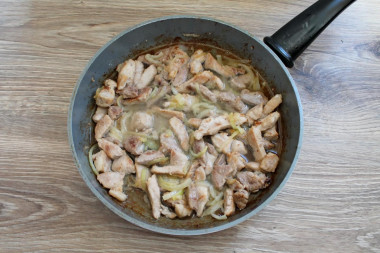
Pour hot water into the pan and stir.
Step 8:
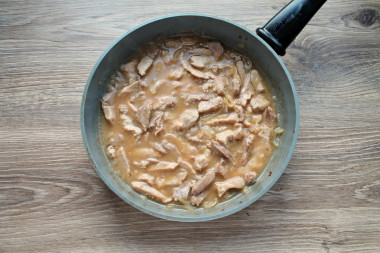
Cover the pan with a lid and simmer for 40 minutes. Keep an eye on the contents so as not to burn and, if necessary, add a little water.
Step 9:
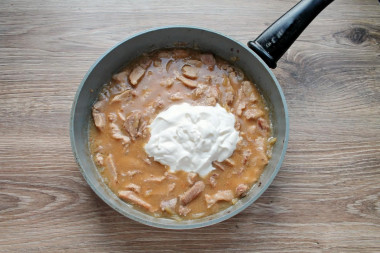
Add sour cream to the pan with meat.
Step 10:
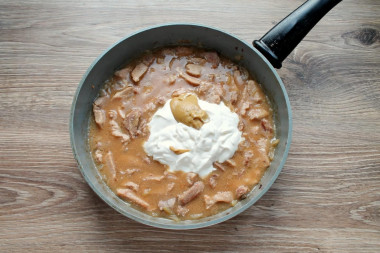
Add mustard, it will add piquancy and make the meat even softer.
Step 11:
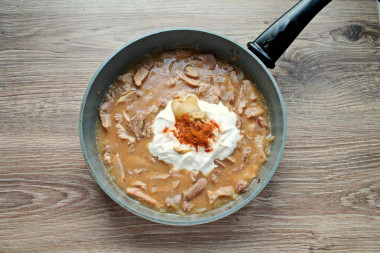
Pour paprika into the pan. You can take any paprika, smoked will give a light aroma of smoke, paprika paste will give a deeper color and taste. If you don't like it, then you can exclude this product. Season everything with salt and pepper, close the lid and simmer on the lowest heat for 20-30 minutes (focus on your stove). Meat in sour cream sauce is ready!
Step 12:
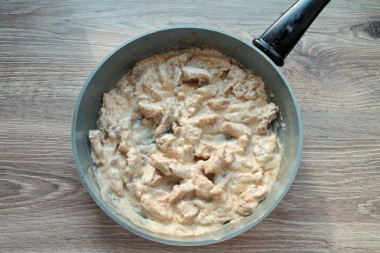
Stewed meat in sour cream can be served with any side dish or simply in a frying pan with fresh vegetables and herbs.
Step 13:
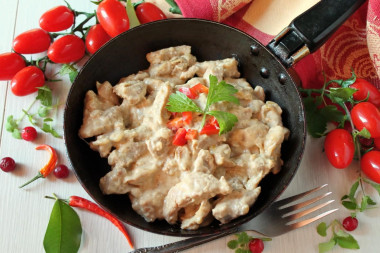
Bon appetit!
Sour cream can be replaced with natural yogurt without additives.
In addition to pork, any other meat can be used in this dish. Keep in mind that the cooking time, as well as the taste and calorie content of the dish will change. For example, beef is cooked longer than pork, and chicken fillet or turkey is less.
Use oil with a high smoking temperature for frying! Any oils are useful only until a certain temperature is reached - the point of smoking, at which the oil begins to burn and toxic substances, including carcinogens, are formed in it.
Unrefined oils, with rare exceptions, have a low smoking point. There are a lot of unfiltered organic particles in them, which quickly begin to burn.
Refined oils are more resistant to heating, and their smoking point is higher. If you are going to cook food in the oven, on a frying pan or grill, make sure that you use oil with a high smoking point. The most common of the oils with a high smoking point: refined varieties of sunflower, olive and grape.
Caloric content of the products possible in the composition of the dish
- Sour cream of 30% fat content - 340 kcal/100g
- Sour cream of 25% fat content - 284 kcal/100g
- Sour cream with 20% fat content - 210 kcal/100g
- Sour cream of 10 % fat content - 115 kcal/100g
- Sour cream - 210 kcal/100g
- Pork fat - 333 kcal/100g
- Pork meat - 357 kcal/100g
- Pork - low-fat roast - 184 kcal/100g
- Pork chop on a bone - 537 kcal/100g
- Pork - schnitzel - 352 kcal/100g
- Pork Shoulder - 593 kcal/100g
- Boar's leg - 113 kcal/100g
- Pork - 259 kcal/100g
- Ground black pepper - 255 kcal/100g
- Whole durum wheat flour fortified - 333 kcal/100g
- Whole durum wheat flour universal - 364 kcal/100g
- Flour krupchatka - 348 kcal/100g
- Flour - 325 kcal/100g
- Mustard canteen - 417 kcal/100g
- Mustard - 417 kcal/100g
- Vegetable oil - 873 kcal/100g
- Salt - 0 kcal/100g
- Water - 0 kcal/100g
- Onion - 41 kcal/100g
- Paprika - 289 kcal/100g

